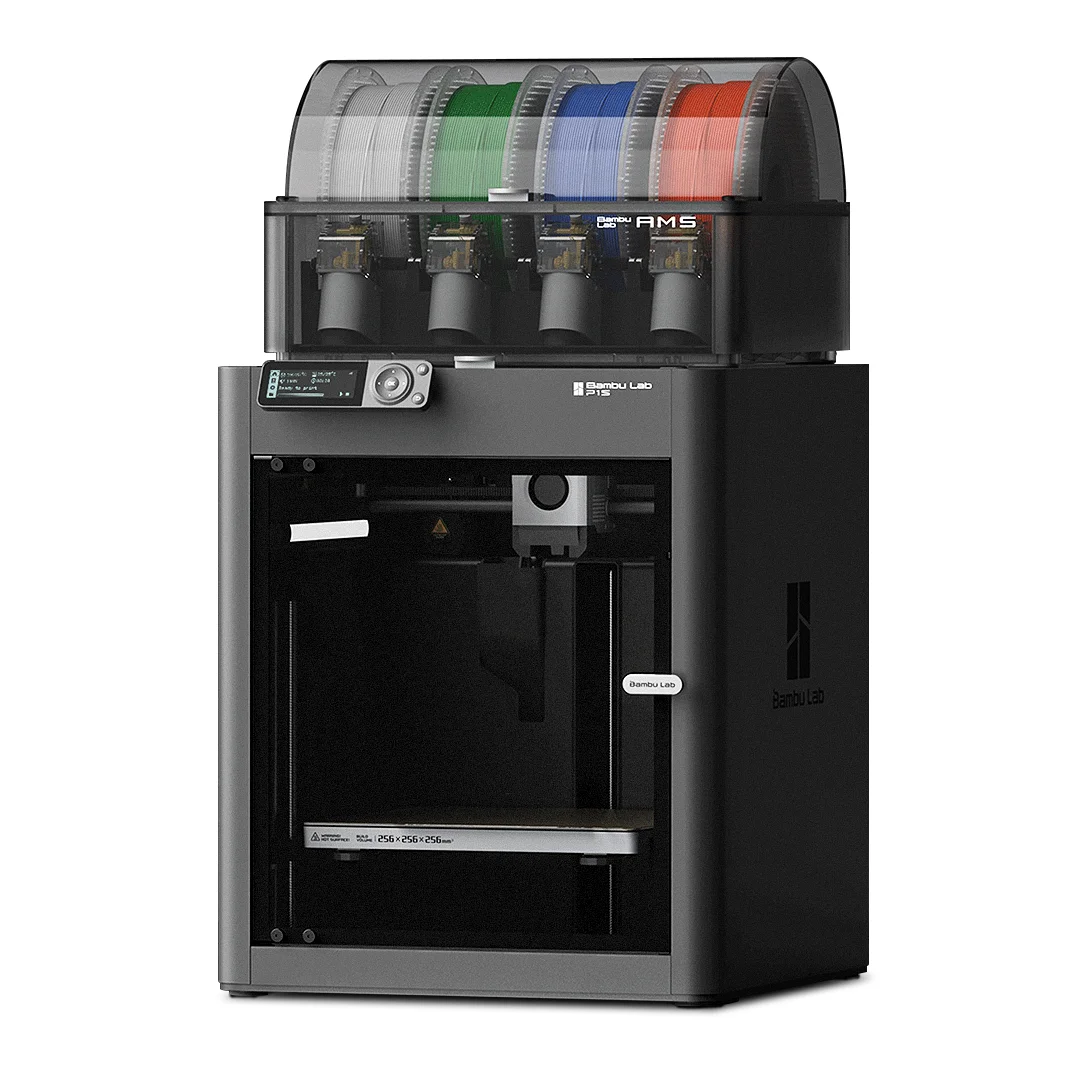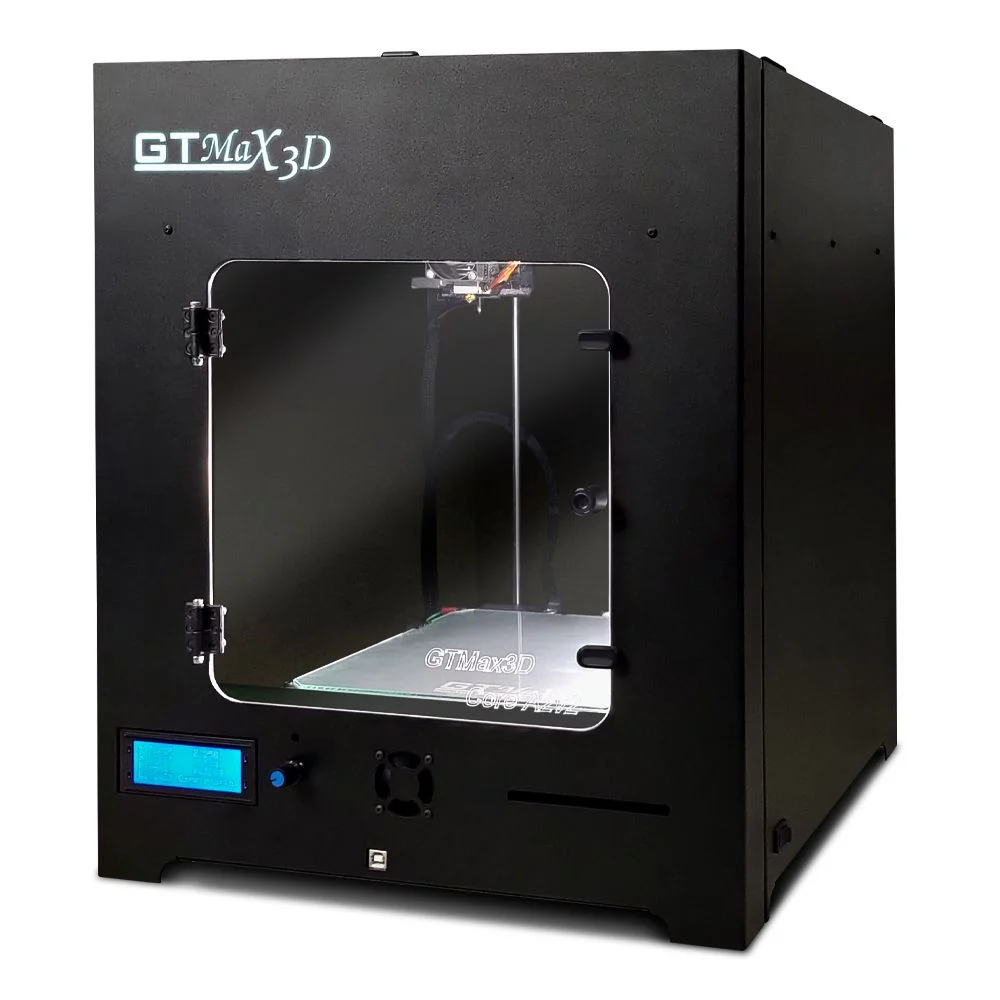Compare P1S vs Core A2V2
Comparison between the best 3D printers
Choose the best 3D printer at the best price. The cheapest 3D printers are here.
Buy a 3D printer here with 3D Fila.
 |
 |
|
| Model | P1S[BUY P1S] |
Core A2V2 |
| Printing Material | Filament | Filament |
| Buy Filament for Bambu Lab P1S | Buy Filament forGTMax Core A2V2 | |
| Estimated price | $949,00 | $684,00 |
| Manufacturer | Bambu Lab | GTMax |
| Release Year | 2023 | 2019 |
| Print Volume [mm] | 256x256x256 | 220x220x240 |
| Printer Size [mm] | 389x389x458 | 425x460x512 |
| Weight [kg] | 12,95 | |
| Power Loss Recovery | YES | YES |
| Enclosed printer | YES | YES |
| Bed Leveling | Automatic | |
| Filament End Sensor | YES | YES |
| Bed type | Heated | Heated |
| Power supply system | Direct Drive | Bowden |
| Standard nozzle | 0,4 | 0,4 |
| Maximum Nozzle Temperature [°C] | 300 | 295 |
| Maximum Bed Temperature [°C] | 100 | 135 |
| Maximum printing speed [mm/s] | 500 | 150 |
| Filament holder | YES | YES |
| Camera for supervision | YES | YES |
| Recommended filaments | PLA, PETG, TPU, PVA, PA, PA-CF, Nylon, PC | PLA, PETG, Tritan, Flex, ABS |
| Recommended slicers | Bambu Studio, Super Slicer, Cura, Prusa Slicer, Orca | Cura, Simplify, Slic3r, IdeaMaker |
| Maximum Resolution [mm] | 0,1 | 0,05 |
| Processor | Quad ARM A7 1.2 GHz | |
| Display | Touchscreen 5'' | Mono |
| Power Supply | 350 W | |
| Connectivity | Wifi, Bambu bus, Cartão SD | SD / USB |
| Operating systems | Windows, Linux, Macbook | Windows, Mac, Linux |
| Date of registration in the system | 2024-04-11 | 2022-11-12 |
| Release date | 2023 | 2019 |
| Extra features | The Bambu Lab P1S stands out for its out-of-the-box practicality, eliminating the need for manual adjustments with automatic calibrations such as bed leveling and vibration compensation. It features multicolor printing capability through the AMS system, allowing up to 16 colors when connecting four AMS units. With an advanced control algorithm, the P1S offers fast printing speeds without sacrificing quality. Equipped with modern features such as filament end sensor, semi-automatic belt tension, direct extruder, welded frame and all-metal hotend, along with a fully enclosed chamber, the P1S promotes a superior printing experience, supporting a wide range of materials. | The GTMax3D ProCore A2v2 is a compact and robust 3D printer with a printing area of ??220 x 220 x 240 mm. It offers high print quality, ranging from 0.05 mm to 0.32 mm. Its features include automatic filament detection and changing, travel speed of up to 300 mm/s, and a heated aluminum bed with a glass top. It has automatic bed leveling with 16 points and an all-metal hotend that reaches up to 298°C. The printer has a carbon steel frame with electrostatic painting, is automatic bivolt and has connectivity via USB and SD card. The Bowden system and core xy kinematics complete its advanced features. |
| Support for multiple colors and materials (AMS and CFS) | YES | NO |
Notes * |
||
| Cost-benefit | 7 / 10 | 6 / 10 |
| Hardware | 6.4 / 10 | 2.5 / 10 |
| Tela | . | . |
| Print volume | 4 / 10 | 3 / 10 |
| Performance | 4 / 10 | 1 / 10 |
| [BUY P1S] |
Conclusion |
| In comparing the Bambu Lab P1S and the GTMax Core A2V2, several key factors emerge that highlight each printer's strengths and weaknesses, particularly in the context of performance, features, and cost-effectiveness. The Bambu Lab P1S, released in 2023, showcases a superior printing speed and a larger print volume. It is equipped with advanced features such as automatic bed leveling, multicolor printing capability, and a more sophisticated control algorithm that contributes to its overall print quality and efficiency. Additionally, the P1S's direct drive system allows for better filament handling, making it versatile across a wider range of materials. Its robust feature set and modern design indicate a thoughtful approach to user convenience and operational smoothness, earning it commendable ratings in cost-benefit and performance. Conversely, the GTMax Core A2V2, while older and less expensive, retains a solid reputation for print quality and reliable features, such as automatic filament detection and a durable construction. However, it falls short in terms of speed and scalability compared to the P1S. The use of a Bowden system and slightly lesser specifications can limit its flexibility with certain filaments, and while it supports a decent range of materials, it does not match the P1S's extensive capabilities. Overall, if budget is not a primary concern, the Bambu Lab P1S stands out as the better choice due to its advanced features, higher performance levels, and versatility. However, for users looking for a more budget-friendly option that still offers quality and essential features, the GTMax Core A2V2 remains a viable contender, albeit with some trade-offs in performance and technological advancements. In summary, the Bambu Lab P1S excels in functionality and performance while the GTMax Core A2V2 offers a reliable, economical alternative. |

